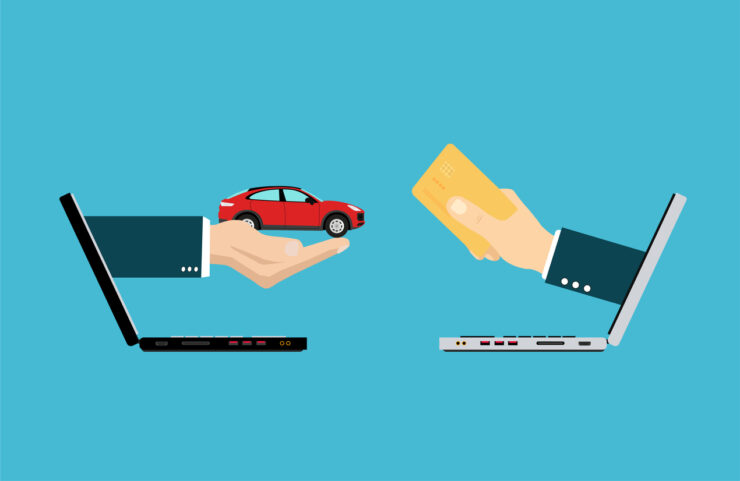With the proliferation of digital marketing, several industries experience changes to their modus operandi as far as sales and funnel costs go. Not only this, but consumers also experience various benefits that streamline their buying process and end up being another advantage to vendors in the automotive industry. Customers over the years have gotten accustomed to researching, making buying decisions, and even negotiating online before seeing the actual product in real life.
Digital avenues already have the trust of the public and are even preferred in some instances as they show how forward-thinking a brand is. Anyone who does not indulge in online marketing seems archaic and loses trust in the marketplace. Not only this, but digital marketing comes with various benefits, not only in the automotive industry but across all sectors.
Among the main benefits an automotive digital marketing service like the one Automotive-Marketing brings to the table are increased customer engagement, expanded reach, streamlined lead generation, and smoothening of the buyer’s journey.
Below you will find more details about the above benefits and more.
Automotive Digital Marketing Benefits

Expansion of audience reach. The utilization of digital marketing allows companies and dealers to reach wider audiences more efficiently and effectively, as opposed to traditional methods. Not only that, but this comes at a lower cost. Considering the logistical conveniences modern technology offers, dealers can target overseas audiences at nearly the same budget as local reach. Not only does this increase sales, but it also lets automotive players test out new markets at an affordable price that does not break the bank.
Better lead generation. The advanced targeting solutions that automotive digital marketing presents allow players in the industry to generate more leads via more effective targeting. For example, using PPC (Pay Per Click) ads allows marketing material to present itself to individuals who have expressed interest in chosen keywords. Furthermore, PPC allows advertisers to only pay for clicks and not every time the ad is displayed. This means that the traffic funneled to the landing page is more qualified and has a larger chance of converting. Social media marketing also offers options to target potential customers via their interests. It is then easier to pinpoint people who are interested in vehicles and get your marketing materials in front of them. A good example of this is Facebook.
Increased and improved customer engagement. Digital marketing in the automotive sector allows the industry to enhance customer engagement and build a community around its brand. The best way to achieve this is by creating and sharing informative, entertaining, and valuable content that resonates with your potential buyer. Not only does this increase engagement, brand trust, and equity, but it also drives conversions over the long term. As a bonus, it bolsters SEO efforts as engagement on social media is an accelerator of ranking metrics.

Buyers access relevant information much more easily. Potential buyers look for different types of information on vehicles they want to buy. For example, a 40-year-old father of three may be more interested in the number of cupholders and ease of cleaning the interior. In contrast, a 25-year-old bachelor might be more interested in mileage, horsepower, aesthetics, and resale value. Different people look to achieve different things with their cars depending on where they are in life. Sometimes, even the most seasoned salespeople cannot tell the difference when face-to-face with a potential buyer. This usually results in them presenting them with irrelevant information and possibly losing the sale altogether. When a dealer or manufacturer has all the pertinent information on their digital avenues, consumers can look for exactly which details are important to them, thus even further streamlining the decision-making process.
Financing and coverage details better inform consumers about what they can afford. By including details such as financing options and insurance estimates in their automotive digital marketing, vendors make it easier for buyers to narrow their options according to financial constraints. This also helps retain customers and increase conversions as they will not have to go to another vendor who has quotes and estimates on their digital avenues. Furthermore, this also streamlines the buyer’s journey, as customers normally do not like making phone calls before they have a number of details that make them comfortable. People do not like giving out their phone numbers when they are unsure whether they will do business with you. When a person must call to get details, they would rather look for a vendor that provides more information upfront.
Lower marketing budgets. As indicated earlier, marketing techniques such as PPC (Pay Per Click) allow automotive advertisers to only pay for people who click on their ads. Some social media platforms offer analytics and advanced targeting options that directly reach people who have already expressed interest in the products on offer. This increases conversion rates and prevents auto dealers and manufacturers from spending their advertising budget on an audience that has no chance of converting. For example, a Super Bowl ad might cost millions of dollars, but its audience is not qualified. Here, the advertiser is playing the game of numbers, hoping for a good conversion rate. Both people who may buy a car and that have no interest in purchasing a vehicle see the ad, making the audience quite unqualified. The same ad spent on digital marketing avenues where the customer can first be qualified would yield a much higher ROI. When compared to modern digital marketing methods, traditional ads are very wasteful and do not offer the data that comes with modern technology.
Conclusion

Automotive digital marketing is here to stay, and the more industry players embrace it, the more their profit margins rise. As time goes by, digital marketing gets better and better, making it more effective as a tool, especially for the automotive industry. The more dealers and manufacturers embrace this technology, the more they set themselves up for long-term growth.
